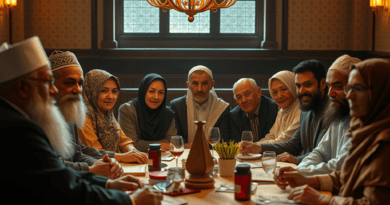Somnath Temple
Context:
Indian Prime Minister will inaugurate the new Circuit House at Somnath.
About Somnath Temple:
- The Somnath temple, is located in Prabhas Patan, Veraval in Gujarat, India.
- One of the most sacred pilgrimage sites for the Hindus, they believe it to be the first among the twelve Jyotirlinga shrines of Shiva.
- Reconstructed several times in the past after repeated destruction by several Muslim invaders and rulers,
- It is unclear when the first version of the Somnath temple was built.
- Estimates for the first Somnath temple vary between the early centuries of the 1st-millennium to about the 9th-century CE.
- The temple’s history is a subject of disputes and remains controversial.
- In 649 AD, King Maitre of Vallabhini built a second temple in place of the temple and renovated it.
- In 725, the old ruler of Sindh took his army and attacked the temple, and destroyed the temple.
- Pratishtha King Nag Bhatt II constructed the temple for the third time in 815 using a red stone (sandstone) stone.
- In 1026, Mahmud Ghazni lent the precious jewels and property of Somnath temple after looting, slaughtering innumerable pilgrims of the temple and burning the temple, and destroying it.
- During 1026-1042 Solanki Raja Bhimdev built the temple of Bhoj and Anhilwad Patan.
- Somnath was destroyed when Delhi Sultanate occupied Gujarat in 1299.
- In 1706, Mughal ruler Aurangzeb again demolished the temple.
- This temple is also referred to as Ahilyabai Temple since it was built by Queen Ahilyabai of Indore when she found that the old temple was in ruins.
- Reconstruction: Reconstructed several times in the past after repeated destruction by invaders, the present temple was reconstructed in Chaulukya style of Hindu temple architecture and completed in May 1951.
- The Somnath temple was actively studied by colonial era historians and archaeologists in the 19th- and early 20th-century, when its ruins illustrated a historic Hindu temple in the process of being converted into an Islamic mosque.
- After India’s independence, those ruins were demolished and the present Somnath temple was reconstructed in the Māru-Gurjara style of Hindu temple architecture.
- The contemporary Somnath temple’s reconstruction was started under the orders of the first Home Minister of India Vallabhbhai Patel and completed in May 1951 after his death.
- Presently the Prime Minister of India Narendra Modi is the chairman of Shree Somnath Mandir trust.
Temple Architecture:
- Nagara or North Indian Temple Style:
- In North India it is common for an entire temple to be built on a stone platform with steps leading up to it. Further, unlike in South India it does not usually have elaborate boundary walls or gateways.
- While the earliest temples had just one tower, or shikhara, later temples had several. The garbhagriha is always located directly under the tallest tower.
- There are many subdivisions of nagara temples depending on the shape of the shikhara.
- There are different names for the various parts of the temple in different parts of India.
- The most common name for the simple shikhara which is square at the base and whose walls curve or slope inward to a point on top is called the ‘latina’ or the rekha-prasada type of shikara.
- The second major type of architectural form in the nagara order is the phamsana, which tends to be broader and shorter than latina ones.
- The third main sub-type of the nagara building is generally called the valabhi type. These are rectangular buildings with a roof that rises into a vaulted chamber.
Sompura Salats (Temple Architects)
- About:
- The Sompuras (or Sompura Salat) are a group of people who took up artistic and masonry works as an occupation and branched off from the Sompura Brahmin community.
- They are a section of Sompura Brahmin or Prabhas Patan which was once called Somapura because it was supposed to have been founded by Chandra (the Moon God).
- However, Sompura Brahmins do not accept them as proper Brahmins.
- They maintain the clan as a strict rule for marriage.
- Origin:
- The Sompuras originally hailed from Patna, Gujarat, and were invited to settle in Chittorgarh.
- Work:
- During the past five centuries, they have been involved in the construction and restoration of numerous Jain temples in Gujarat and southern Rajasthan, as well as temples built by Jains from regions in other parts of India.
- Though traditions in the family call for elders to pass the learnings of the Shilpa Shastras and the art of ancient temple architecture to the next generation, the modern age calls for certain upgrades to that technique.
- Ram janm Bhumi Temple is also designed by the Sompura Family.
Govt. initiatives in the tourism sector
- The Tourism Ministry is developing tourist circuits on 15 themes under Swadesh Darshan Scheme, creating opportunities for tourism in neglected areas.
- The Country has moved from 65th place in 2013 on Travel & Tourism Competitiveness Index to 34th place in 2019.
- Pilgrimages of all religions are covered under the ‘PRASHAD’ (Pilgrimage Rejuvenation and Spiritual, Heritage Augmentation Drive) Scheme.
- The development of Somnath has been proposed as one of the iconic tourism destinations by the Ministry of Tourism under its Integrated Destination Development Scheme (IDDS) for the development of components such as Prabhas Patan Museum, Tourist Amenities, Haat etc.
Source: AIR
You can find many articles on ART AND CULTURE (part of GS I) in our website. Go through these articles share with your friends and post your views in comment section.



